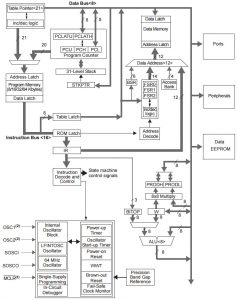The world's most precise clock has been fine-tuned to boost radar and GPS capabilities.
The Cryogenic Sapphire Oscillator, or Sapphire Clock, has been enhanced by researchers from the University of Adelaide in South Australia to achieve near attosecond capability.
The oscillator is 10-1000 times more stable than competing technology and allows users to take ultra-high precision measurements to improve the performance of electronic systems.Increased time precision is an integral part of radar technology and quantum computing, which have previously relied on the stability of quartz oscillators as well as atomic clocks such as the Hydrogen Maser.
Atomic clocks are the gold-standard in time keeping for long-term stability over months and years. However, electronic systems need short-term stability over a second to control today's devices.
The new Sapphire Clock has a short-term stability of better than 1x10-15, which is equivalent to only losing or gaining one second every 40 million years, 100 times better than commercial atomic clocks over a second.
The original Sapphire Clock was developed by Professor Andre Luiten in 1989 in Western Australia before the team moved to South Australia to continue developing the device at the University of Adelaide.
Lead researcher Martin O'Connor said the development group was in the process of modifying the device to meet the needs of various industries including defence, quantum computing and radio astronomy.
The 100cm x 40cm x 40cm clock uses the natural resonance frequency of a synthetic sapphire crystal to maintain a steady oscillator signal.
Associate Professor O'Connor said the machine could be reduced to 60 per cent of its size without losing much of its capability.
"Our technology is so far ahead of the game, it is now the time to transfer it into a commercial product," he said.
"We can now tailor the oscillator to the application of our customers by reducing its size, weight and power consumption but it is still beyond current electronic systems."
The Sapphire Clock, also known as a microwave oscillator, has a 5 cm cylinder-shaped crystal that is cooled to -269C.
Microwave radiation is constantly propagating around the crystal with a natural resonance. The concept was first discovered by Lord Rayleigh in 1878 when he could hear someone whispering far away on the other side of the church dome at St Paul's Cathedral.
The clock then uses small probes to pick up the faint resonance and amplifies it back to produce a pure frequency with near attosecond performance.
"An atomic clock uses an electronic transition between two energy levels of an atom as a frequency standard," Associate Professor O'Connor said.
"The atomic clock is what is commonly used in GPS satellites and in other quantum computing and astronomy applications but our clock is set to disrupt these current applications."
The lab-based version already has an existing customer in the Defence Science and Technology Group (DST Group) in Adelaide, but Associate Professor O'Connor said the research group was also looking for more clients and was in discussion with a number of different industry groups.
The research group is taking part in the Commonwealth Scientific and Industrial Research Organisation's (CSIRO's) On Prime pre-accelerator program, which helps teams identify customer segments and build business plans.
